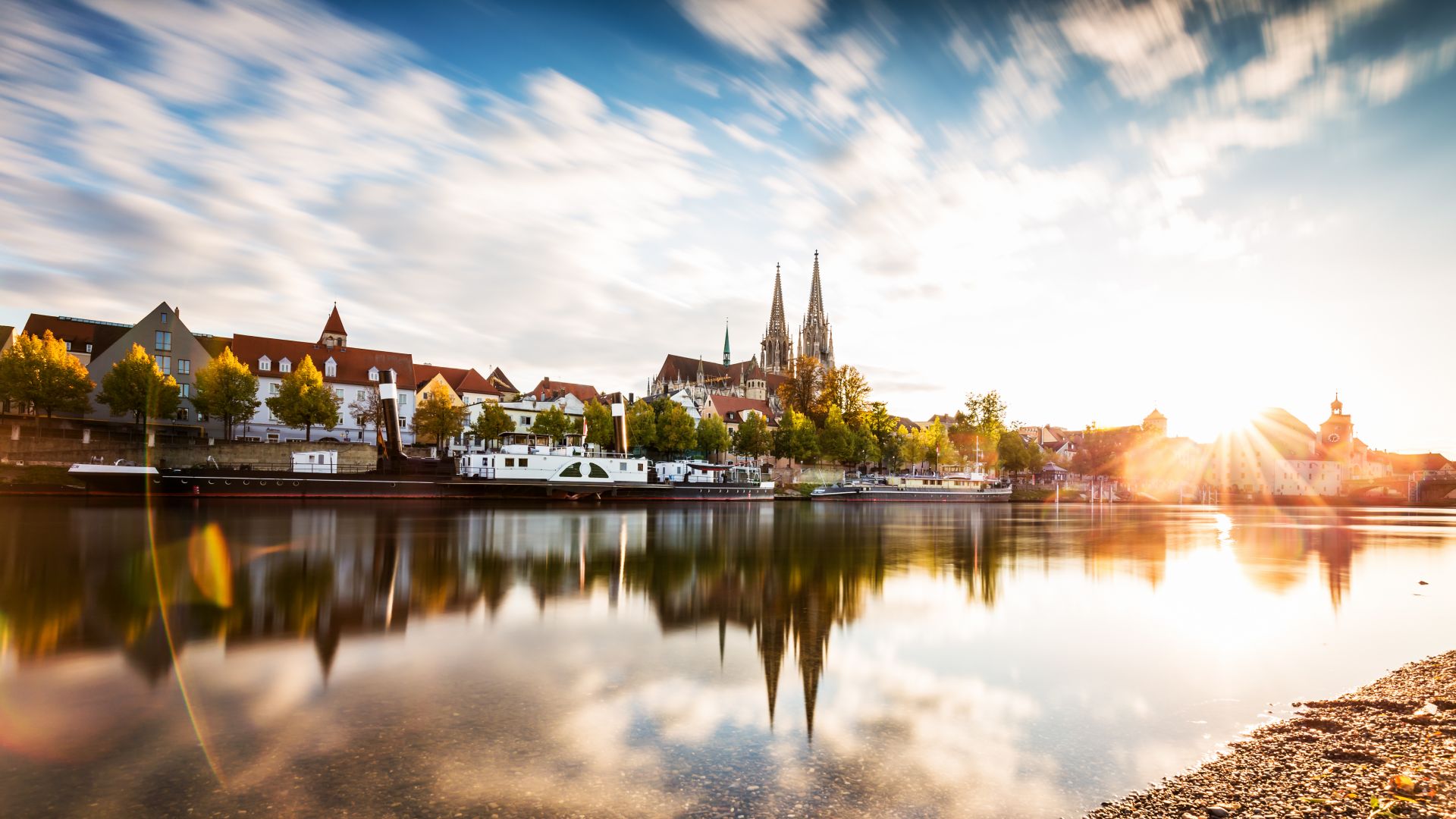Old Towns with UNESCO World Heritage Status in Germany
Often, it is "only" individual buildings in a historic town that UNESCO declares a World Heritage Site. In the case of Lübeck, Goslar, Regensburg, Stralsund and Wismar, on the other hand, the entire Old Town has been recognised. And rightly so!
Lübeck: gabled houses, Nobel Prize winners and marzipan
Before the euro, everyone held the image of the Holsten Gate in their hands instead, as it adorned the 50-Mark note. Such an honour is not lightly awarded. In fact, the late-Gothic building is considered to be one of the most famous German architectural monuments. With its thick walls it once protected the Old Town, surrounded by the river Trave and Elbe-Lübeck canal. At around 100 hectares, this is one of the largest German monuments on the UNESCO World Heritage List. As you walk past the gabled houses of this Hanseatic city, you'll discover idyllic courtyards and passageways such as the Füchtingshof, or Glandorps Gang. Literature fans can pay a visit to the Günter Grass-Haus, as well as the Buddenbrookhaus, dedicated to Thomas Mann. Third on the list of Lübeck's Nobel Prize winners is former German Chancellor Willy Brandt, who also richly deserves his memorial. The Niederegger House is considered a place of pilgrimage for marzipan lovers.

Photo: Lübeck
Goslar: good things come in threes
The UNESCO World Heritage Site on the north-western edge of the Harz Mountains includes not only the Goslar Old Town and the Upper Harz Water Management System, but also the Rammelsberg ore mine – the only one in the world to have been in continuous operation for over 1,000 years. You can find information about this site at its museum, visitor galleries and events. Nearby Goslar, which has prospered from its ore, also offers some captivating events, including the Old Town Festival. Its 1,500 half-timbered houses form a great backdrop even without any event going on, and the setting is further enhanced by the Town Hall (the Hall of Homage is definitely worth seeing) and remains of the town walls. The Imperial Palace was making history for almost 250 years, especially in the Romanesque Great Imperial Hall, Germany's largest, oldest and at the same time best-preserved secular building of the 11th century.

Photo: Goslar
Regensburg: journey into the Middle Ages
Its 12th century Stone Bridge is considered a miracle of medieval engineering: it spans 300 metres across the Danube, and connects the Stadtamhof district with the Old Town. There, the towers of St. Peter's Cathedral rise high into the sky, and a prison complete with a torture chamber has been preserved in the Reichstag Museum within the historic Old Town Hall. There is plenty to see here, with Germany's largest collection of medieval sites: the Patrician Towers of wealthy families, Thurn und Taxis Palace, winding alleyways, delightful courtyards and the multimedia museum, the "House of Bavarian History", which opened in 2019 and covers the period from 1800 to the present. This student city is always lively – its high density of pubs is quite legendary! But even without alcohol, a boat trip to the Kelheim Hall of Liberation or to the Valhalla can be intoxicating.

Photo: Regensburg
Wismar and Stralsund: brick Gothic architecture on the Baltic Sea
These are the Hanseatic cities, located on the Baltic coast of Mecklenburg-Vorpommern – and their Old Towns were added to the UNESCO World Heritage List in 2002: Wismar and Stralsund have a lot in common. And yet at the same time also have their own individual character. Wismar's 100 by 100 metre market square, for example, is one of the largest in northern Germany. The buildings that make up its Town Hall are truly outstanding, as are the "Alter Schwede" community centre and the "Wismarer Wasserkunst" pavilion. In the really beautiful "Schabbellhaus" you can learn a lot about the town's history – and the"European Route of Brick Gothic". Stralsund is also on this route. Its harbour island is home to around 500 historic buildings, many of them gabled houses, and some of them brick churches. Above all, the 104-metre tower of St. Mary's Church shapes the city's skyline – a city which also appeals to fish lovers. For one, it is considered the birthplace of the Bismarck Herring, and it is also home to the magnificent OZEANEUM.

Photo: Wismar and Stralsund

